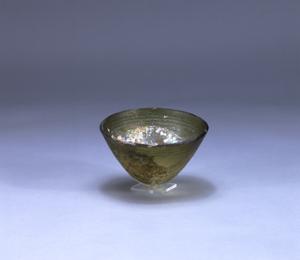Roman Glass
The Romans all but ignored glass as a material until the 1st century BC when blown glass was invented. There was not even a Latin word for it until about 65 BC. Yet scarcely a century later glass vessels could be found in virtually every Roman house. The glassworking craft had been transformed into an industry, with perhaps as many as 100 million vessels being made every year--everything from delicate perfume bottles to heavy storage jars, and all kinds of tableware.
The first glass workers in Italy were slaves, Syrian and Judaean craftsmen shipped over as spoils of war around 10 BC. They brought with them the crafts of mold-casting and free-blowing that were essential for the glassworking industry's success. Their descendants, as freedmen, most likely ran the workshops that sprang up close to every provincial city and military camp throughout the empire. By the early 1st century AD, all of the aesthetic techniques of our modern glass industry--among them mold-blowing, lathe-cutting, and faceting--were standard in the Roman glassworking repertoire.
Mold-blown glass made sturdy vessels suitable for short- and medium-range shipments of marketplace goods. Wine and olive oil, preserved fruits and cooking sauces, dried herbs and medicines were common contents. Compared with massive pottery amphoras, glass bottles figured little in long-range trade. Nevertheless, they often traveled far from where they were made. Filled and refilled, bottles were carted from town to town until they rested finally as storage vessels in some distant provincial kitchen. Glassware could travel long distances swiftly, however, if it was part of a military legion's transfer to a new trouble spot.
The invention of glassblowing, around 70 BC and its industrial-scale use around the time of Christ made glassware affordable for all Romans. The wealthy stored their cosmetics and medicinal lotions in silver and bronze. Poorer folk could now use both pottery and glass. Bottles called unguentaria were used to store oils or lotions. At first small and crudely finished, their shapes became greatly refined over the centuries. Various other kinds of glass juglets and jars stored herbal ingredients and oils so that lotions could be prepared fresh each morning.
(From "Guide to the Etruscan and Roman Worlds at the University of Pennsylvania Museum of Archaeology and Anthropology" 2002)


